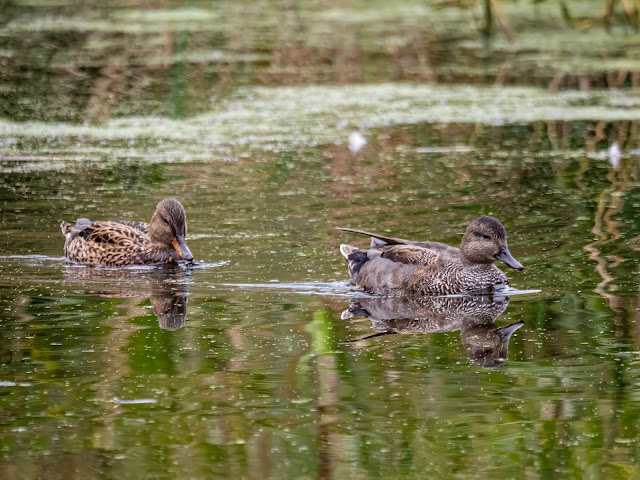RSPB Rye Meads in Hertfordshire is a site that is relatively easy for me to visit by public transport: bus to Billericay, train to London Liverpool Street followed by another train to Rye House and then a short walk to the reserve entrance.
My visit today was my first
since 9th October 2023,
exactly a year ago.
Rye Meads is a 58.5 hectare biological Site of Special Scientific Interest (SSSI) located in Rye House near Hoddesdon in Hertfordshire. It is one of series of wetlands and reservoirs situated along the River Lea to the north east of London. It is part of the Lea Valley RAMSAR site (a group of internationally important wetland sites) and a Special Protection Area (SPA).
Rye Meads is divided into several areas. North of Rye Road is the Rye Meads nature reserve: the western half of this nature reserve, next to the River Lea in the Lee Valley Regional Park, is managed by the RSPB and the eastern half is managed by the Hertfordshireand Middlesex Wildlife Trust. It also includes a meadow and lagoons owned by Thames Water south of Rye Road which is not open to the public.
I visited the RSPB Rye Meads reserve which includes a visitor centre, trails and a number of hides. The seasonal flooding of a large ancient flood meadow combined with the rich soils has resulted in a mosaic of habitats, consisting of reedbeds, marshy grasslands and fen vegetation plus a number of small lakes and a scrape.
The main target species of my visit today was to very belatedly record my first Kingfisher of the year. Despite RSPB Rye Meads being one of the most reliable sites that I know for this species, I completely failed!
However, whilst this was obviously disappointing, I did have an enjoyable visit with the following highlights (heard only records in italics): Green Sandpiper (1), Common Snipe (2), Lapwing (c.50), Little Egret (1), Grey Heron (2), Gadwall (c.200), Shoveler (c.50), Teal (c.20), Tufted Duck (c.20), Mallard (c.20), Water Rail (1), Coot (c.50), Moorhen (c.30), Little Grebe (4), Mute Swan (c.35), Egyptian Goose (10), Canada Goose (2), Cormorant (2), Chiffchaff (1 singing male plus another seen), Cetti’s Warbler (1 singing male), Grey Wagtail (2), Great Spotted Woodpecker (1 heard calling), Stock Dove (3)
Other species recorded: Reeves’ Muntjac (1), Grey Squirrel (1), Emperor Dragonfly (1)
Here are some photos
from my visit ....
Photo: Green Sandpiper
Photo: Gadwall
Photo: Moorhen
Photo: Moorhen
Photo: Moorhen
Photo: Moorhen
Photo: Moorhen











No comments:
Post a Comment
If you feel like commenting on my blog, you can contact me by completing the comment form below. I will respond to all comments and enquiries and constructive criticism will always be welcomed.